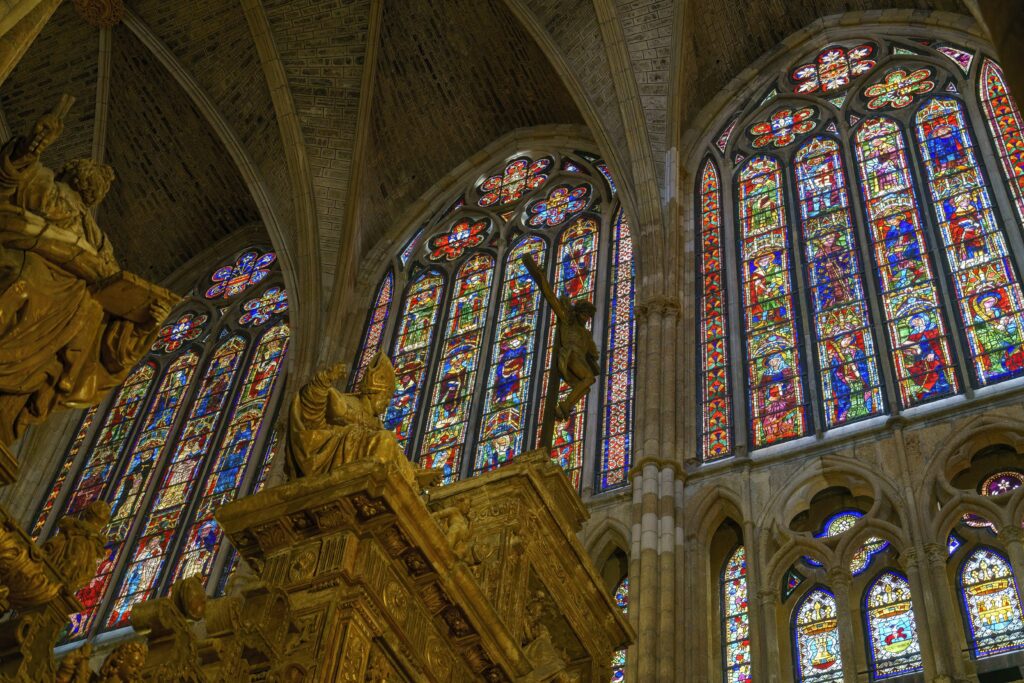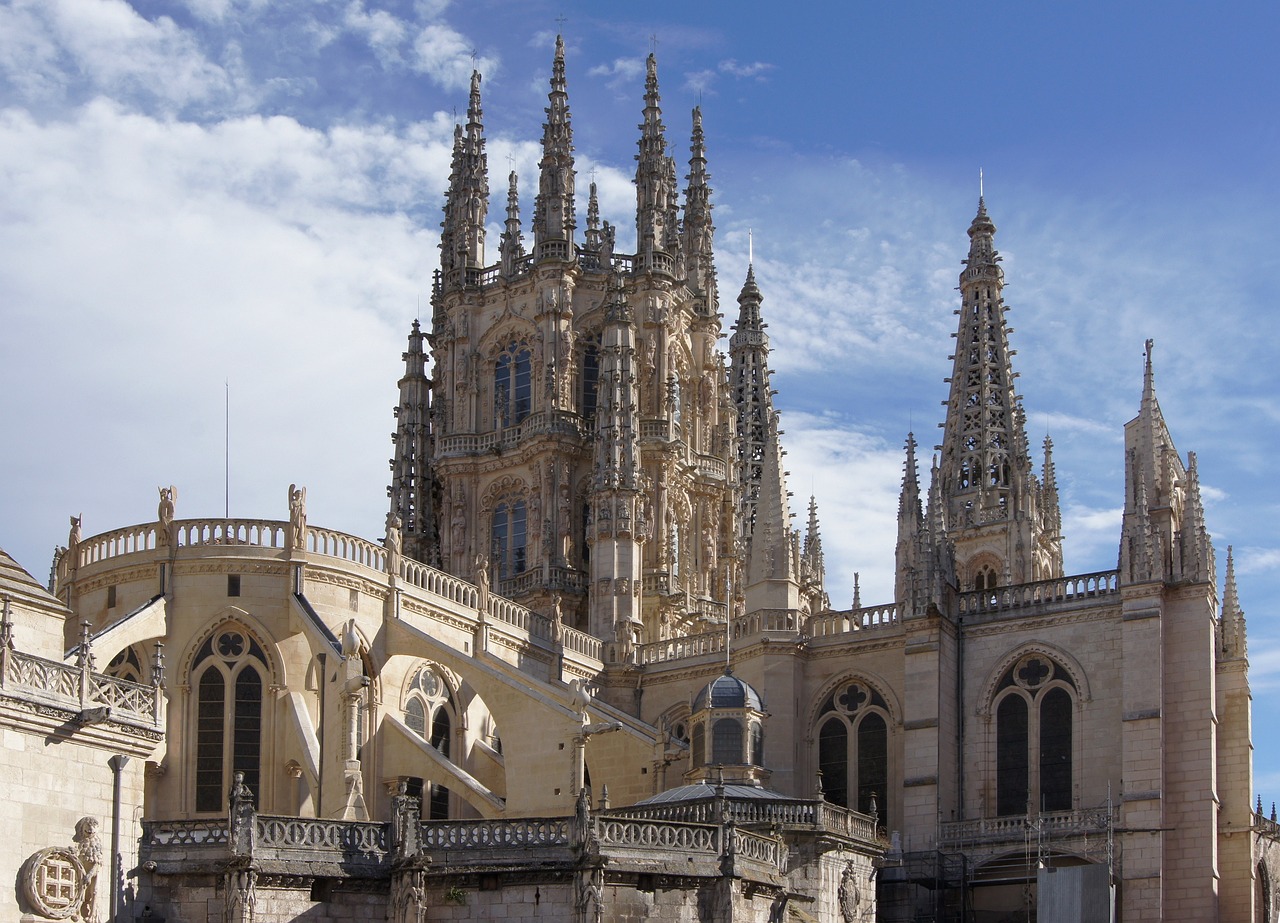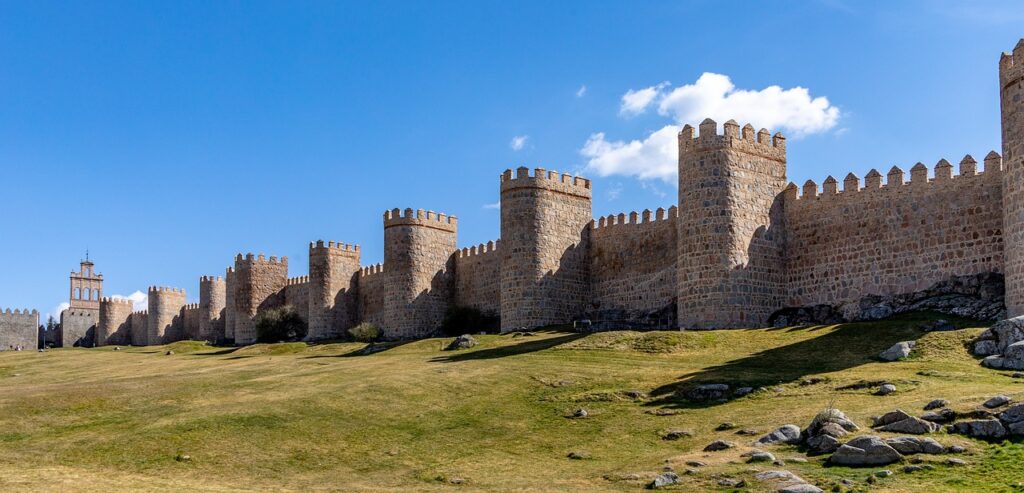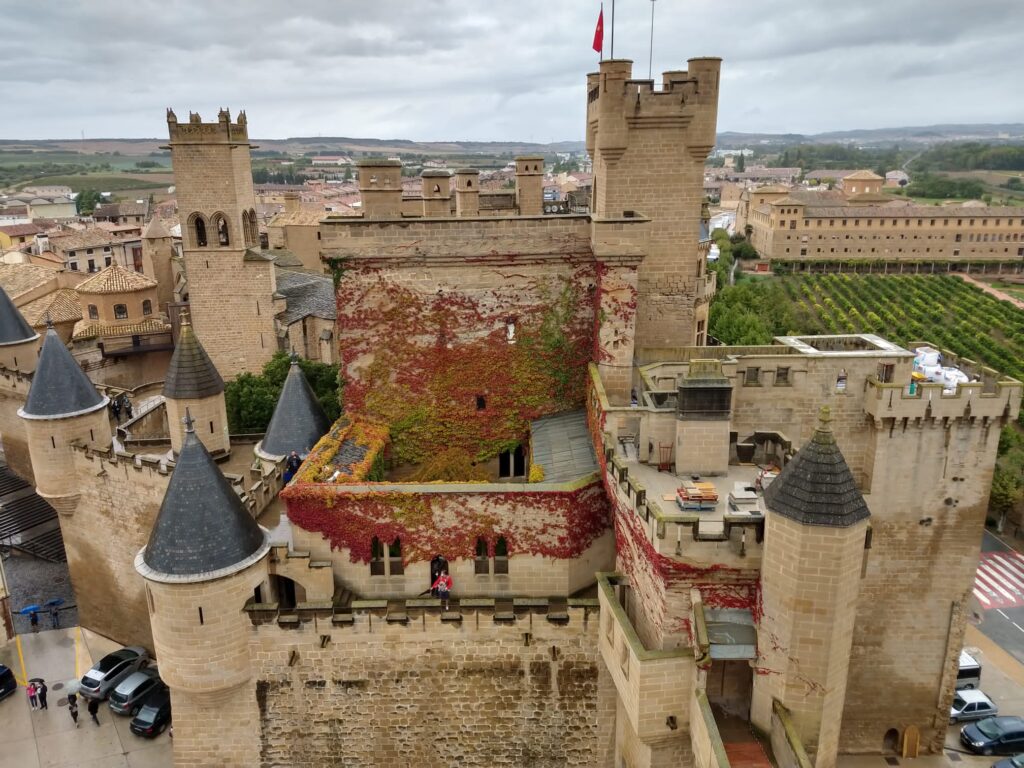As you may know already, Spanish history and architecture is quite extensive and full of diversity. The fact that our country was conquered and inhabited by multiple civilizations, has created different artistic styles coexisting over the centuries. A good example of this is the Muslim art. There were parts of the country occupied by the Islamic caliphate from century 7th to 15th when Catholic kings regained the last Muslim kingdom of Granada. During the 700 years of occupation there was a great work of arts with focus in the architecture as we can see in many of the old mosques (most reconverted to catholic temple after the reconquest). If you are more interested about this topic, there is a list of symbolic architecture in this page but also some of these buildings are included in cities.
Symbolic and emblematic architecture

Catedral de Santiago de Compostela
It was started in 11th century and had Romanesque style that later combined Gothic and baroque architecture. Its origin was the sepulchre of apostle Santiago el Mayor, and it is the final stop for the pilgrims who take El Camino de Santiago. Some of the most important parts in the religious building are ‘El pórtico de la Gloria’ that has beautiful sculptured from romanesque art, and the façade ‘Fachada del Obradoiro’ with a large decoration and flanked by the towers known as ‘Campanas’ and ‘Carraca’

Mezquita de Córdoba
The Mosque-cathedral of Córdoba is a very particular building as it not only shows the complete evolution of the Omeyan style in Spain, but also the Gothic, Reinaissance and Baroque styles used for the part constructued after the end of muslim rule. The great Mosque is made up of two areas, the courtyard or ‘sahn’, where the minaret was (now is the tower), and the prayer hall or ‘haram’. The most characteristic art work inside the building are the colums with a design of red and white arches.
Museo Guggenheim Bilbao
A symbol of the city, this building was designed by Frank Gehry. It represents the innovation in modern art of 20th century. Its design is integrated in the surrounding are (located in a former wharf) and consist of a series of interconnected volumens. The structure is made of titanum, glass and limestone.

Catedral de León
This cathedral is one of most beautiful religious buildings in Spain and a great example of Gothic architecture with french style. It was constructed in 13th century, on top of ancient roman baths. Its most significant parts are the carved porticos, colourful stained glass and rose windows.


Acueducto de Segovia
The aqueduct from 2nd century is an impressive work if engineering, which remain standing in a perfect balance of forces. It is a construction of double arcade that follows the principles established by Vitrubio in his work ‘De architecture’ from middle 1st century. Its highest points is 28,5 mts and originally went across 17 km.

Alhambra de Granada
It gets its name from the reddish color of the walls (Al-Hamra in Arabic). Declared World Heritage monument in 1984, it rises above the city of Granada, creating a beautiful landscape. The original construction would be formed of a city, fortress and palace for the Kingdom of Granada. The most visited monument in Spain offers some emblematic places like ‘El Patio de los Leones’ or ‘La Alcazaba’, a real castle to defend the city.
Catedral de Salamanca
This cathedral is a unique architectural ensemble as it is formed of two different temples that are connected one to the other. On one side is the Old Cathedral ‘Catedral Vieja’, from 12th century, with a romanesque style and a beautiful tower known as ‘Torre del Gallo’. On the other side is the New Cathedral ‘Catedral Nueva’, from 16th century, constructed in Late Gothic. It contains a rich set of baroque art.

Teatro romano de Mérida
The location of this ancient Roman theater contributes to a better acoustic in this construction, which has capacity for 3.000 people. It was inaugurated between 16-15th century b.c, being consul Marco Agripa his promoter. As most of roman theaters, it has a shape of semicircle with a stage that it probably had a great architectonic composition, now only some parts exists like the marble columns.


Sagrada Familia de Barcelona
It is a symbolic building of the city (still unfinished) and known internationally due to the specific architecture and decoration created by Antoni Gaudí during the catalan modernism period in Barcelona. The new way in which geometry was applied, allowed to define shapes never seen before, creating a very original temple that cannot be compared to any other in the world.

Catedral de Burgos
It is the only cathedral in Spain that is declared as World Heritage by UNESCO; constructed mainly during Gothic period, it also adds other styles as it was not finished until 1765. It stands out the sculpture ensemble on ‘Puerta del Sarmental’. The main facade, is ‘Puerta del perdón’ with a starred rose-window and a gallery of statues with the kings from the same region.
Murallas de Ávila
The city walls date from Romanesque period (archaeological excavations reveal some sort of wall construction in the 1st century AD), and it is a great example of a defensive construction, considering is well preserved. It has 87 turrets and nine gates that provided access to the city, being ‘Puerta del Alcázar’ the most spectacular one.

Palacio Real de Olite
This was the residence of the kings of Navarra until 16th century. A medieval castle constructed over a fortress from 13th century. It is influenced by french architecture and múdejar decoration (Muslim art from the peninsula). As a result, there are different parts to visit, from gardens to galleries and towers.


Santa María del Naranco
Located in the Naranco hill, is a unique temple because of its size. It was constructed in Pre-Romanesque style; originally a residence for King Ramiro I (during 9th century) and later converted into a church. It was declared World Heritage monument in 1985.

Monasterio de San Lorenzo del Escorial
Symbol of the golden century in Spain (Siglo de Oro), it was created by Juan de Herrera, which gave name to a new style in architecture known as ‘arquitectura herreriana’. The construction began in 1563 and is divided in three areas, including the King’s Courtyard at the center, the Ministries and the artisans’ houses. The library contains close to 45.000 documents from the 15th and 16th century.

Catedral de Toledo
It was erected over a Muslim mosque, having finished around year 1300 the main nave although it continued to be constructed for over two more centuries. The choir stands out and it is considered one of most impressive works in Christian architecture. It also contains works made by the painter El Greco.